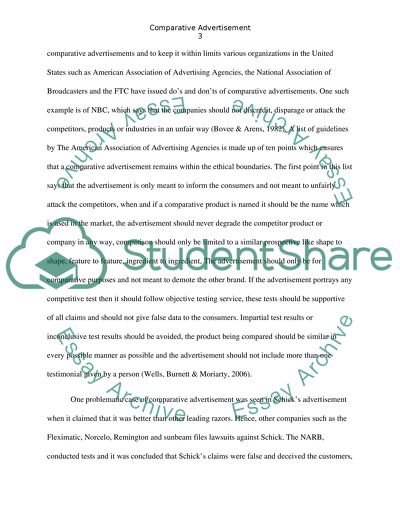Cite this document
(Comparative Advertisement as an Extremely Influential Tool Essay Example | Topics and Well Written Essays - 1750 words, n.d.)
Comparative Advertisement as an Extremely Influential Tool Essay Example | Topics and Well Written Essays - 1750 words. https://studentshare.org/philosophy/1685706-comparative-advertisement-as-an-extremely-influential-tool
Comparative Advertisement as an Extremely Influential Tool Essay Example | Topics and Well Written Essays - 1750 words. https://studentshare.org/philosophy/1685706-comparative-advertisement-as-an-extremely-influential-tool
(Comparative Advertisement As an Extremely Influential Tool Essay Example | Topics and Well Written Essays - 1750 Words)
Comparative Advertisement As an Extremely Influential Tool Essay Example | Topics and Well Written Essays - 1750 Words. https://studentshare.org/philosophy/1685706-comparative-advertisement-as-an-extremely-influential-tool.
Comparative Advertisement As an Extremely Influential Tool Essay Example | Topics and Well Written Essays - 1750 Words. https://studentshare.org/philosophy/1685706-comparative-advertisement-as-an-extremely-influential-tool.
“Comparative Advertisement As an Extremely Influential Tool Essay Example | Topics and Well Written Essays - 1750 Words”. https://studentshare.org/philosophy/1685706-comparative-advertisement-as-an-extremely-influential-tool.


